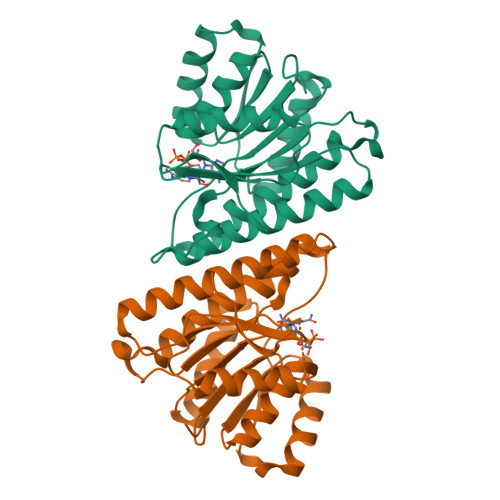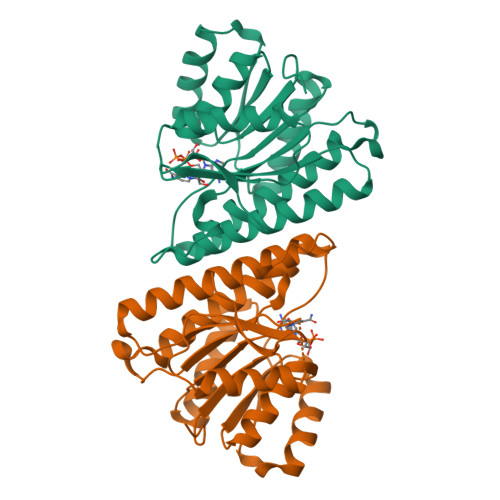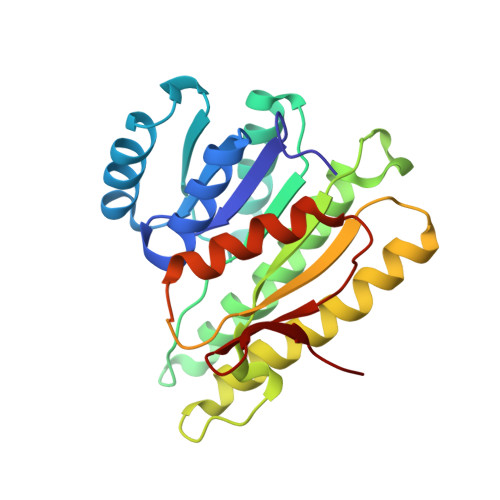Small molecule inhibitors of 15-PGDH exploit a physiologic induced-fit closing system.
Huang, W., Li, H., Kiselar, J., Fink, S.P., Regmi, S., Day, A., Yuan, Y., Chance, M., Ready, J.M., Markowitz, S.D., Taylor, D.J.(2023) Nat Commun 14: 784-784
- PubMed: 36774348
- DOI: https://doi.org/10.1038/s41467-023-36463-7
- Primary Citation of Related Structures:
8CVN, 8CWL, 8FD8 - PubMed Abstract:
15-prostaglandin dehydrogenase (15-PGDH) is a negative regulator of tissue stem cells that acts via enzymatic activity of oxidizing and degrading PGE2, and related eicosanoids, that support stem cells during tissue repair. Indeed, inhibiting 15-PGDH markedly accelerates tissue repair in multiple organs. Here we have used cryo-electron microscopy to solve the solution structure of native 15-PGDH and of 15-PGDH individually complexed with two distinct chemical inhibitors. These structures identify key 15-PGDH residues that mediate binding to both classes of inhibitors. Moreover, we identify a dynamic 15-PGDH lid domain that closes around the inhibitors, and that is likely fundamental to the physiologic 15-PGDH enzymatic mechanism. We furthermore identify two key residues, F185 and Y217, that act as hinges to regulate lid closing, and which both inhibitors exploit to capture the lid in the closed conformation, thus explaining their sub-nanomolar binding affinities. These findings provide the basis for further development of 15-PGDH targeted drugs as therapeutics for regenerative medicine.
Organizational Affiliation:
Department of Pharmacology, Case Western Reserve University, Cleveland, OH, 44106, USA.

















